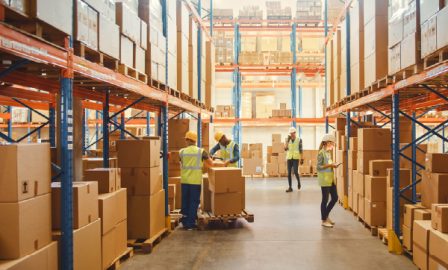Government Shutdown 2019: Impact to Consumer Products Industry
Government workers, federal contractors, and the private sector alike face challenges due to the current government shutdown that started in December. Twenty-one days into the shutdown, the White House Council of Economic Advisers doubled their estimates of economic loss due to the shutdown, reporting that quarterly economic growth is now dropping 0.13 per week it continues. The closings have impacted the consumer products industry both directly and indirectly. With government services curtailed and a number of people temporarily out of work, the shutdown affects the nation’s general economic health, consumer spending patterns, and even supply chain logistics.
Government Services on Delay
The food and beverage and beauty industries are examples of groups directly impacted by the closing of government agencies. With approximately 41 percent of its staff on furlough, the FDA has been forced to cut back on food inspections. Beauty and cosmetic inspections have also completely halted. The USDA still inspects meat, poultry, and eggs, but the FDA is responsible for high-risk foods such as seafood, cheese, and produce. This poses a threat to supply chains in the event of a food-borne illness outbreak or recall. Some experts worry these lapses in surveillance may decrease the public’s trust in food safety.
The shutdown also means that employers are currently unable to use the government’s program for verifying work eligibility. Combined with the current employment market, restaurants and retailers face potential staffing issues. The Small Business Administration stopped giving loans, which means the shutdown could hit small businesses especially hard. Small businesses are still obligated to file their taxes and payments on time, despite a backlog on receiving capital. Additionally, requests from consumer packaging groups for steel and aluminum tariff exclusions are not being processed either. Companies that were not able to obtain an exclusion before the shutdown now might need to temporarily raise prices to cover the higher cost of input materials.
Spending Slowdown
With 800,000 government workers going without pay, retailers have already noticed a slowdown in overall consumption. Areas with especially high numbers of government employees, such as Washington, D.C., have felt the strongest effects. For some government employees, this financial uncertainty curtailed holiday spending. While government workers hope to be reimbursed when the shutdown ends, federal contractors don’t anticipate receiving back pay for missed business opportunities. The government spends $300 billion a year on service contracts alone, many of which are with engineering and IT firms.
These furloughs, combined with concerns about the stock market and international trade tariffs, have also led to a sharp decrease in consumer confidence according to the University of Michigan’s monthly Survey of Consumers. Both the macro and micro effects of the shutdown and subsequent decrease in consumer confidence can have long-term effects to economic growth and stability. Delayed tax refunds, for example, mean some consumers will hold off buying big-ticket items or searching for a new home. A similar delay on tax returns in 2016 affected a range of industries, from dining to shoe wear and household appliances.
The decrease in consumer spending caused by government furlough, economic uncertainty, and late tax returns is bad news for general economic growth. Almost everyone is affected in some way by the government shutdown, from an everyday shopper buying produce at the grocery store, to a larger company waiting on federal approval. Once the government does reopen, some issues will likely still follow companies into the immediate future. By focusing on what a company can control, businesses can use this time to assess, refine, and redeploy 2019 strategies to reflect the changes brought about by the shutdown.
Coauthor and contributions by Sabrina Zirkle



